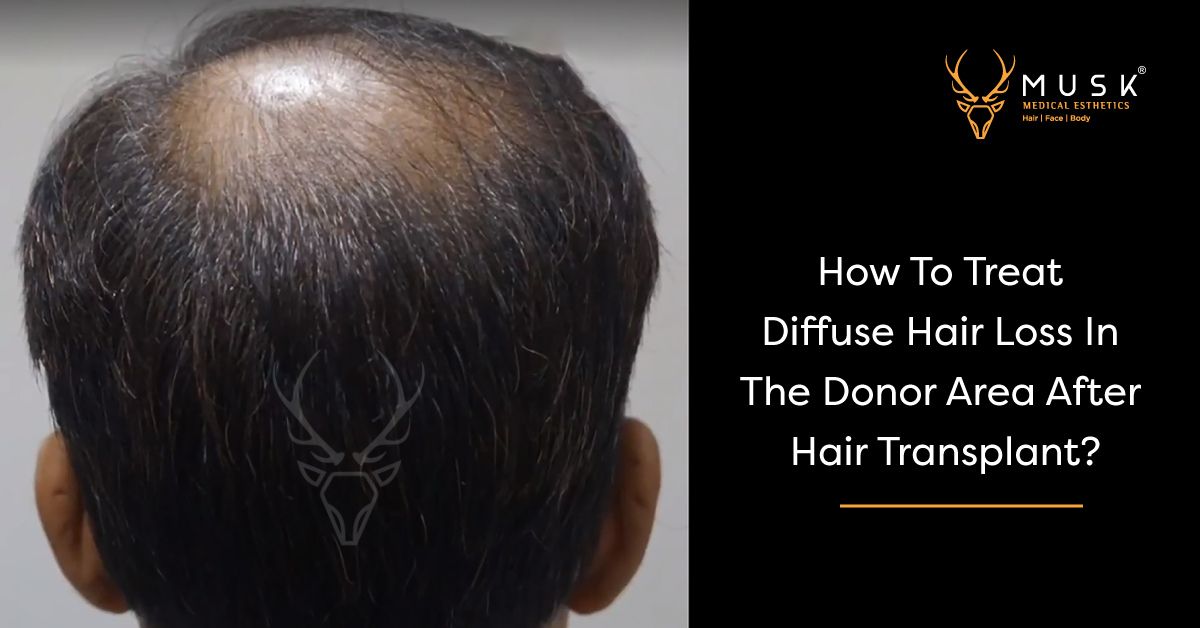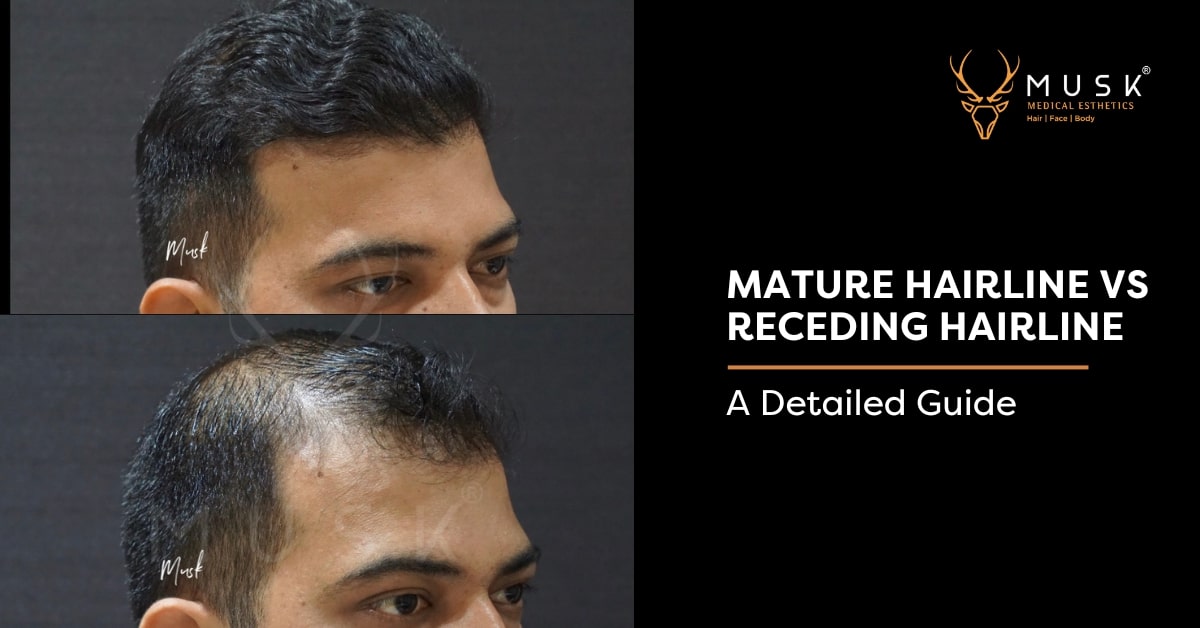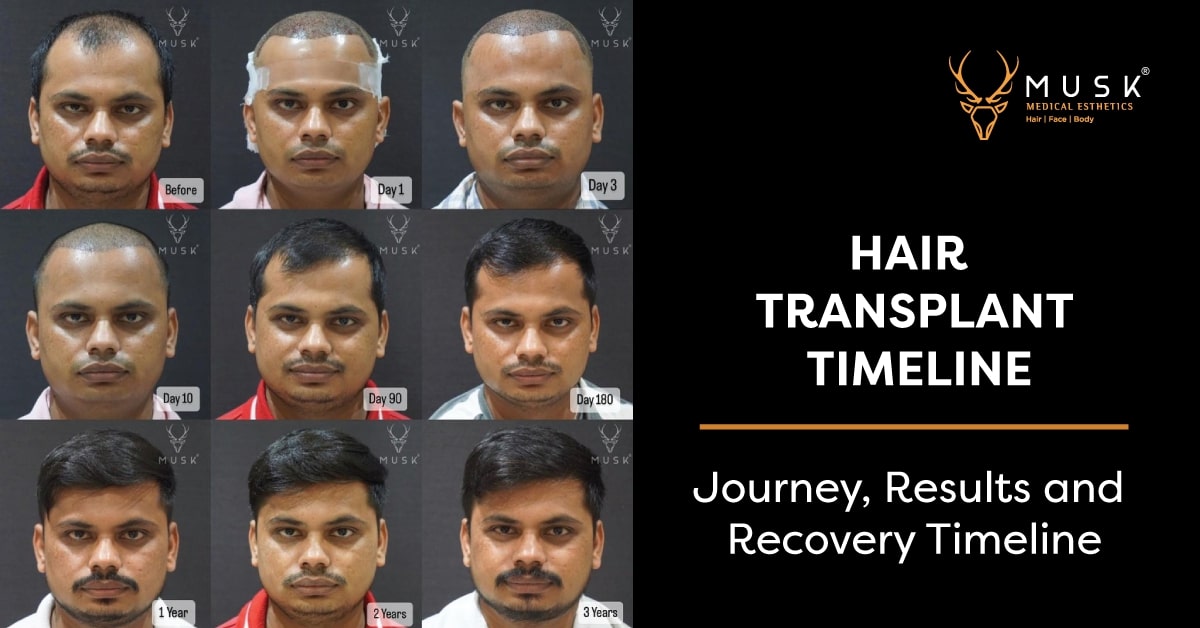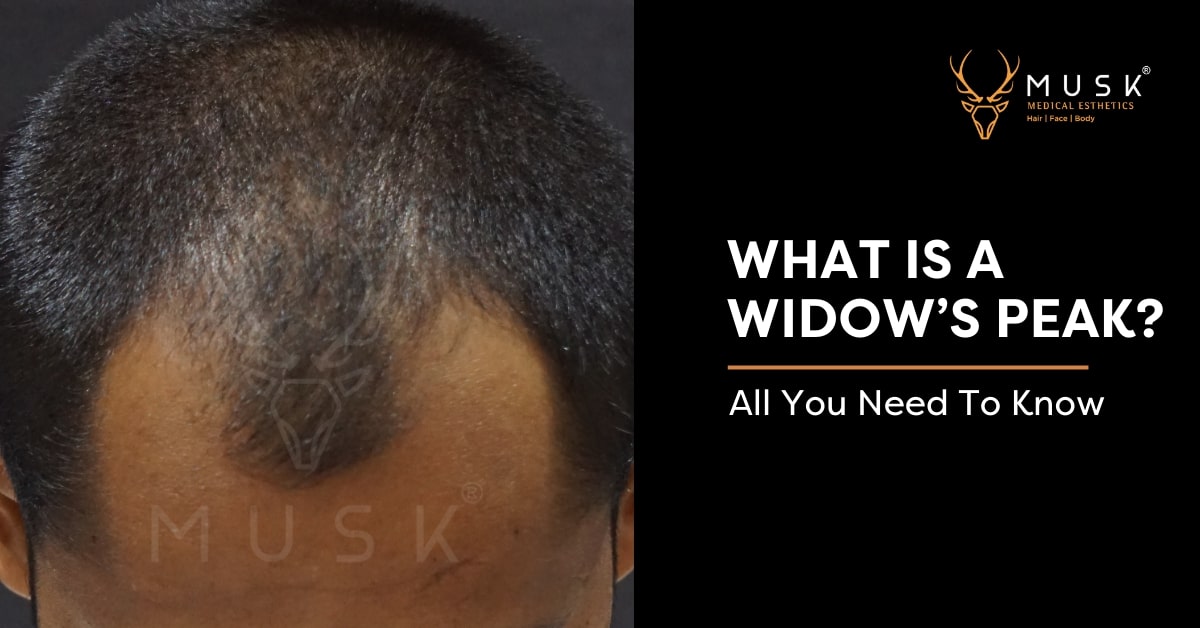
How To Treat Diffuse Hair Loss In The Donor Area After Hair Transplant?
Isn’t it good that now with advanced technology, anyone suffering from hair loss can easily restore their lost confidence?
Like good health, who doesn’t want a head full of hair? Though, due to unhealthy lifestyles, heredity, hormonal changes, and many such reasons, men and women today are experiencing hair loss.
Baldness has stolen many people’s confidence but not anymore.
With USFDA-approved modern technology, Musk Clinic is providing the best hair transplant treatment in Ahmedabad, India. Being one of the best hair transplant specialists in Ahmedabad, Musk Clinic ensures that after hair transplant, patients experience naturally growing hair with 100% satisfactory results.
But But But!
There is one more thing. Even though a hair transplant treatment is performed to get back your lost hair and give you voluminous hair, many have suffered from hair loss in their donor area.
Why?
To answer more than this, we have brought you this blog.
If you are planning to get a hair transplant treatment, read on for some incredible pieces of information related to the donor area, why patients experience hair loss in their donor area, and most importantly how to treat them.
Also, know more about how bad donor areas can affect the results of hair transplants and more.
What is a Donor Area?
The donor area is the area from where the hair follicles are extracted and collected and further implanted in the scalp or the affected area during the hair transplantation process.
The ideal donor area can be both the ear side, chin, or behind the scalp area. If these donor areas are weak, then hair follicles can be extracted from the body.
Different textured hair and colored or curly hair follicles are factors of the donor areas that play an important role in determining the results after transplantation.
What is a hair transplant?
Hair transplantation is a surgical technique where professional experts remove hair follicles from one part of the body, known as the donor area, and implant them in the affected area, known as the recipient area.
Patients should only get a hair transplant from trained and certified surgeons that ensures satisfactory results and follows hygienic measures and safety management while performing the treatment.
At Musk Clinic, we provide the following hair loss treatments to treat hair loss:
- ARTAS 9X ROBOTIC Hair Transplant or Follicular Unit Extraction (FUE) Hair Transplant
- Follicular Unit Transplantation FUT Hair Transplant
- PRP Hair Treatment
What does diffusing the donor area mean?
Diffusing of the donor area means thinning and loss of scalp hair seen in the donor area before and after the hair transplant treatment. The reduction of hair follicle density in the donor area can have an unfavorable effect on the hair transplantation procedure.
What are the common reasons behind hair loss in the donor area?
The common causes of diffuse hair loss in the donor area are:
- Genetic factors
- Deficiency of iron
- Taking too much stress
- Due to diseases like Thyroid
- Sometimes due to fever
- Surgery or general anesthesia
- Unhealthy diet
- Accident
Can donor area affect the results of hair transplant?
The donor area is considered to be of significant importance for performing hair transplant procedures. Without a good density donor area, hair transplantation can’t be performed.
And if performed a hair transplant with a weak donor area, the patient might not get the expected results.
It can also cause things like;
- Not getting the expected results
- Have to take repetitive sessions
- Hair loss even after spending time and money to cure it
Hence, the results of a hair transplant rely on the donor area.
What are the bad donor areas and good donor areas?
The bad donor areas for the hair transplant procedure are;
- The donor area of a person suffering DUPA i.e. Diffuse unpatterned alopecia is not suitable for a successful hair transplant as they tend to have unhealthy hair.
- A deceased donor is also not a good choice for a hair transplant
- The donor area of a patient having thin or weak hair
- The donor area of people under the age of 25
- Cicatricial Alopecia scars due to unknown causes
The good donor areas for the hair transplant procedure are;
- Scalp hair in the occipital area and adjacent temporal areas is the most suitable donor area for hair transplant as the growth of hair in this area is permanent.
- The next suitable donor area for hair transplant is the beard because the hair in this area is naturally thick and is also resistant to DHT.
- The other options for donor areas are stomach and chest hair. Even though they are thin they are in most cases found to be thick enough to look like scalp hair. They are sometimes also used to soften the hairline.
How to treat diffuse hair loss caused in the donor area?
To get the most out of hair transplantation, it’s important to improve the hair density in the donor area. And the most common treatment for diffuse hair loss in the donor area is a medication that promotes hair growth.
Here are several ways to cure diffuse hair loss in the donor areas before and after hair transplantation.
Using Topical Minoxidil
Minoxidil solution comes in the form of liquid and foam and can be used by both men and women. The Minoxidil solution helps in increasing the hair growth phase, also known as the Anagen Phase, and slows down the deposition and resting phase of the hair, known as the Telogen Phase.
This solution doesn’t help in thickening the hair or preventing the thinning of hair, but it helps slow the beginning of the resting phase when the hair gradually becomes thinner.
This solution can be used by both males and females, but it doesn’t work for everyone who uses it.
For effective results, the Minoxidil solution must be used continuously, and for males, the solution should be used with 5% concentration and for females with 2% concentration.
Finasteride tablets
The next treatment is an oral medication recommended for men. Using Finasteride tablets inhibits the enzyme 5-alpha reductase in men which reduces the production of DHT. Dihydrotestosterone (DHT) is the main cause of hair thinning and thus hair loss.
Unfortunately, the tablets don’t work the same for every man using them; hence many men refuse to take them.
For effective results, the tablets must be used continuously to strengthen weak hair and reduce future hair loss.
Antibiotics after transplantation
Usually prescribed after 3-5 days after the hair transplantation, Antibiotics help in preventing infections and ensure a smooth recovery.
An Antibiotic cream might be needed during the recovery process to cure the cysts or bumps seen in the recipient or donor area.
Dermaroller
Dermaroller is also one effective way to treat diffuse hair loss in the donor area. It is used to massage the scalp to improve blood circulation. It is recommended to use it after 45 days of surgery for 2-3 times a week only.
Intake of iron supplement
Iron deficiency is also one of the reasons why many experience hair loss. Hence, the doctor tests the level of iron in the blood, and if found a deficiency of iron, they recommend taking iron supplements to stop hair loss.
How long does it take for the donor area to heal after a hair transplant?
It takes around two weeks for the donor area to heal after FUE or FUT hair transplant. The healing process doesn’t take long and soon restores its natural aesthetic appearance.
What are the effects on the donor area after a hair transplant?
Many patients wonder about the effects on the donor area after a hair transplant. Questions like whether I will get the burning sensation or pain in the donor area after a hair transplant are much expected.
The donor area after the transplant looks red and swollen and some may also experience a slight burning sensation. In some cases, it bleeds because of the needle that removes hair follicles from the scalp.
To relieve pain and discomfort it is recommended to keep the head elevated and relaxed after surgery.
How to heal your donor area after a hair transplant?
- Clean the donor area
- Take rest and avoid the sun
- Do not wear tight-neck shirts
- Take your prescribed antibiotics
- Do not scratch or pick the scabs
- Do not drink or smoke
Wrapping up
If you are planning to get hair transplantation then you must start to follow the pharmaceutical treatment for at least six months before the procedure to stabilize your donor area. This will help you achieve satisfactory hair growth results.
Still, if there’s anything that you need to know, contact us here.
Read More:
Hair Transplant Journey: Hair Transplant After 3 Months – Results
Everything You Need to Know About ARTAS Robotic Hair Transplant In India
PRP for Hair Loss: Efficacy, Safety, and Cost – Musk Clinic
Undergoing A Hair Transplant: Things To Consider
ARTAS 9X Robotic Hair Restoration Treatment
- Hair Transplant


